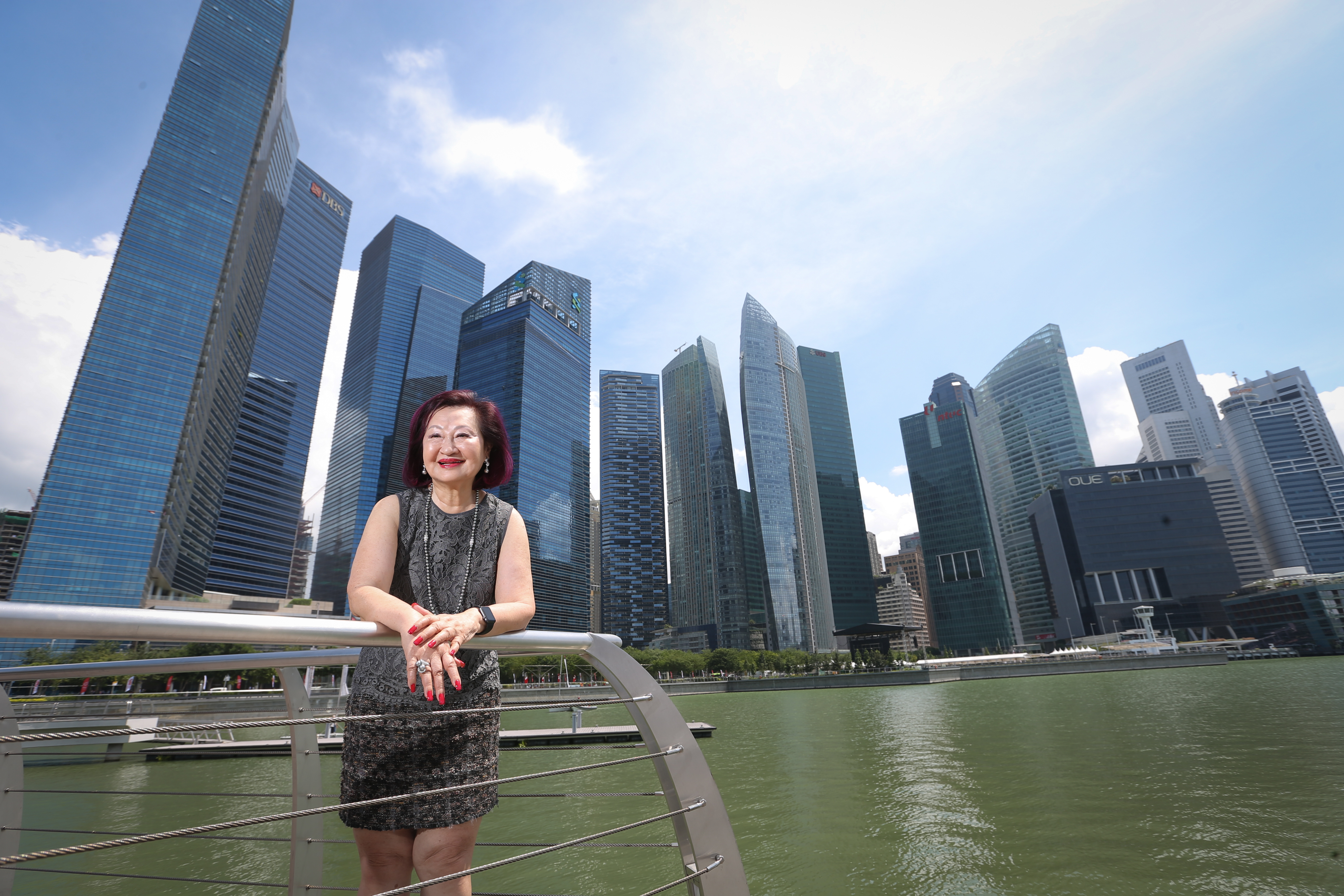A TOAST TO AN IMPROBABLE NATION: THE FIRST ASIAN DOLLAR MARKET
Bridging markets in the East and West
As a Third World country, Singapore had to find a way to fill a need and attract foreign bankers
Sign up now: Get ST's newsletters delivered to your inbox

Mrs Elizabeth Sam, 76, was given the task of promoting the Asian Dollar Market and other financial markets, such as the foreign exchange market. From 1971 to 1981, she met many offshore bankers and laid out Singapore's advantages - including its good location, political stability and financial incentives - to encourage them to set up their Asian operations here.
ST PHOTO: ONG WEE JIN
Chong Koh Ping
Follow topic:
A window of a few hours between the time San Francisco closed and Zurich opened was the opening Singapore seized on back in 1968 to turn itself into a financial centre for South-east Asia, and eventually one of the leading hubs in the world.
The time-zone advantage meant that after the close of the United States markets then, which would be morning Singapore time, bankers here could start trading with counterparts in Asia-Pacific centres such as Hong Kong, Tokyo and Sydney. In the afternoon, they could do business with London and the rest of Europe, when those markets opened.
Through the Asian Dollar Market (ADM), Singapore bridged the gap between East and West at a time when funds were flowing strongly into a rapidly industrialising Asia.
The move was not without risk. It meant lifting foreign-exchange control restrictions on all currency transactions between Singapore and territories outside the sterling area.
To Mrs Elizabeth Sam, 76, one of the first women to join the elite Administrative Service, fell the task of promoting the ADM and, later, other financial markets such as the foreign-exchange market. It was a role she played in her 10 years at the Monetary Authority of Singapore from 1971 to 1981, in a career that would later see her rise to become one of Singapore's top women bankers.
-
CURRENCYMARKET
MILESTONES
• 1971: The Monetary Authority of Singapore (MAS) isestablished as the central bank and financial regulator. 1978: Exchange controls abolished to facilitate freer flow of funds between Singapore and rest of world.
• 1981 - 1997: Dr Goh Keng Swee, in his role as chairman, undertakes massive restructuring of the MAS. He implements unique monetary policy centred on exchange rate, rather than interest rate, paving the way for many years of low inflation and high growth. The Government of Singapore Investment Corporation (now known as GIC) is set up to invest Singapore's reserves. It has become the eighth-largest state fund globally, with anestimated US$344 billion (S$471 billion) of assets undermanagement, according tothe United States-based Sovereign Wealth Fund Institute.
• 1998 : Mr Lee Hsien Loong takes over as MAS chairman. He embarks on a shift in regulatory approach to one that emphasises supervision. TheMAS also focuses its efforts on promoting the Singapore financial industry and its role as a financial centre.
• 1999: The domestic banking sector is liberalised in phases and access is granted to foreign banks. Local banks consolidate, with seven players becoming three. Futures exchange Singapore International Monetary Exchange (Simex) merges with the Stock Exchange of Singapore (SES) to form the Singapore Exchange.
• 2002: Board of Commissioners of Currency is merged with the MAS, whichassumes the function of issuing currency.
Recalling the ADM's early days, she said: "The promotional role is unusual for a central bank, probably the first in the world at that time." Neither the US Federal Reserve nor the Bank of England did it, as their concern was regulation and the conduct of monetary policies.
Mrs Sam met many offshore bankers to encourage them to set up their Asia operations in Singapore. At every meeting, she and her colleagues laid out clearly Singapore's advantages - a good location, political stability, financial incentives and a supportive government prepared to help.
She played down her role but, at that time, Singapore was still a Third World country and, unlike Hong Kong, could not count on the backing of a giant like the Bank of England. Foreign bankers had to be won over.
What Singapore did was provide tax incentives, by abolishing withholding tax on interest income earned by non-resident depositors. All Asian dollar deposits were also exempted from statutory liquidity and reserve requirements.
In his 2000 book From Third World To First, Mr Lee Kuan Yew wrote: "We had to fight every inch of the way to establish confidence in our integrity, competence and judgment. The history of our financial centre is the story of how we built up credibility as a place of integrity, and developed the officers with the knowledge and skills to regulate and supervise the banks, security houses and other financial institutions so that the risk of systemic failure is minimised."
The ADM took off because it fulfilled a market need. Asia was growing fast and "we offered them the opportunity to have a foot in the region", Mrs Sam said.
A key concern was a lack of relevant manpower, so the MAS worked with the immigration authorities to expedite the entry of experienced bankers and specialists in this field.
But it was also mindful not to let the flow of funds into the ADM disrupt the domestic monetary system. So, the offshore banks were required to set up a separate book-keeping unit known as the Asian Currency Unit (ACU) for such transactions. The ACU would be permitted to accept deposits from non-residents and to lend US dollars and other foreign currencies to finance activities outside Singapore.
Starting with just US$33.16 million in 1968, ADM monies grew quickly to cross the US$1-billion mark by 1971. Today, total ADM assets are over US$1.2 trillion (S$1.7 trillion).

